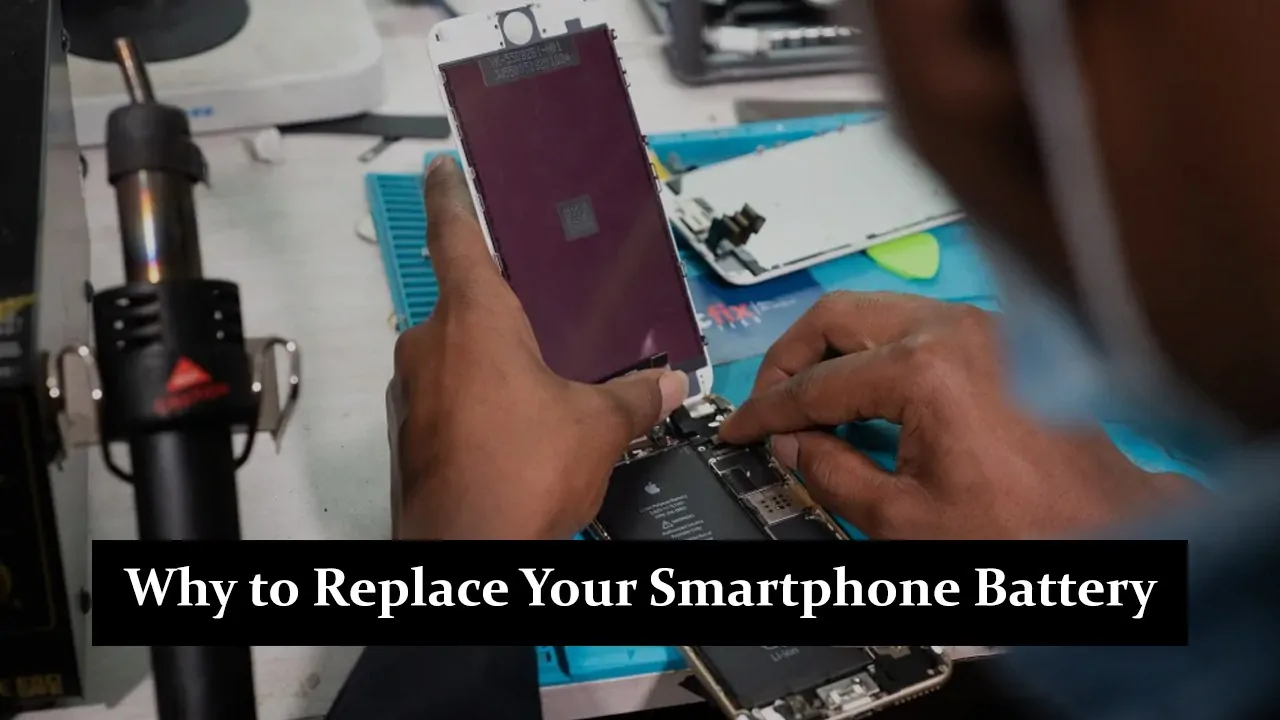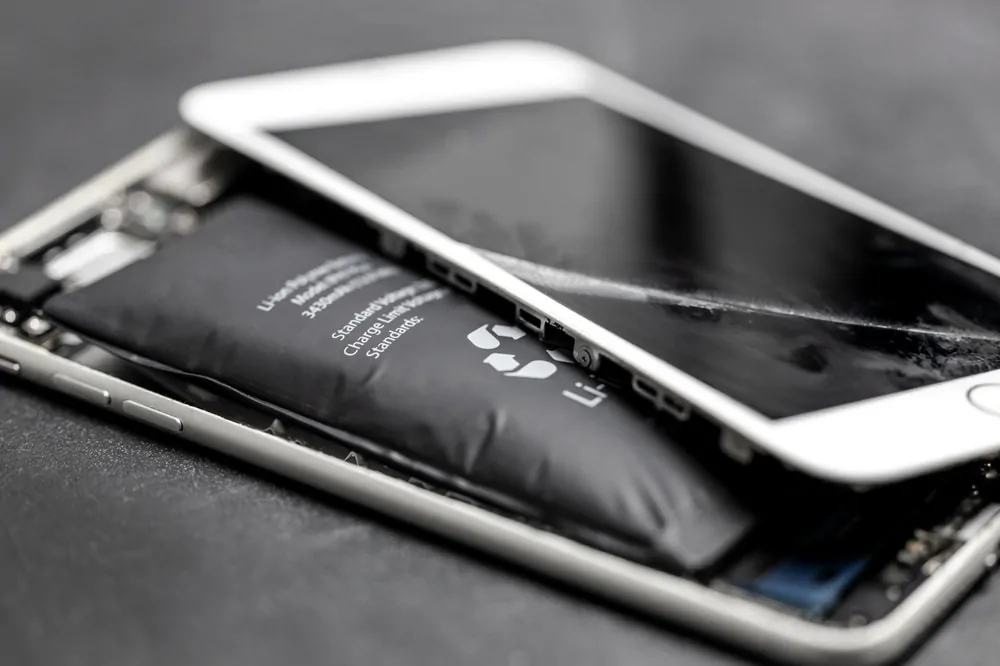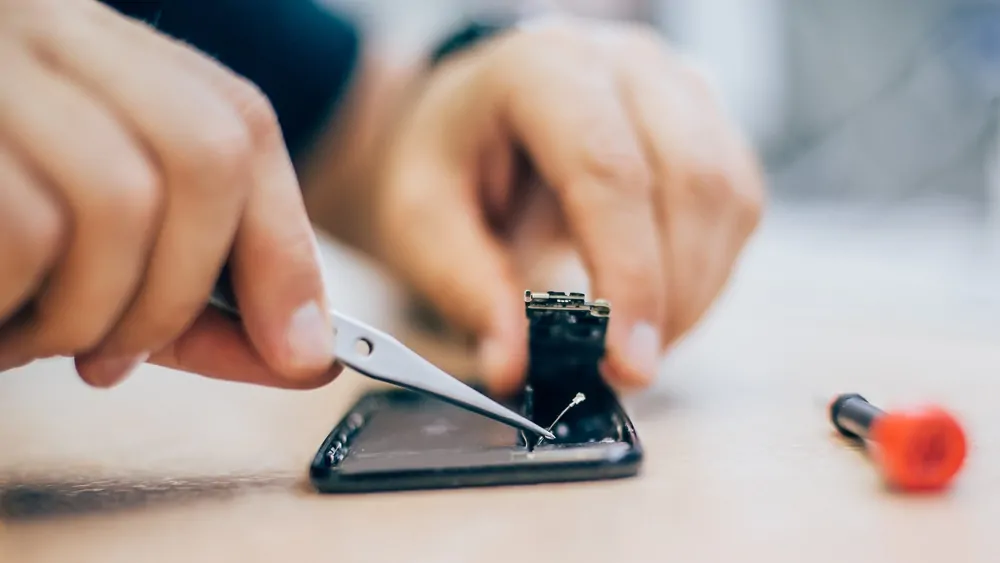Smartphone batteries don’t last forever; most show signs of wear after about two to three years. As they age, you may notice your mobile phone drains faster, shuts down unexpectedly or takes longer to charge. Knowing when to replace your battery can keep your phone running smoothly and save you from needing a new device too soon. In this guide, we’ll cover the key signs that mean it’s time for a new battery so you can keep your smartphone performing at its best.
Signs Your Battery Needs Replacement
- Decreased Battery Life: If your phone’s battery drains quickly, even after a full charge, it’s a sign that the battery is weakening. This rapid drainage can make it challenging to use your phone throughout the day.
- Unexpected Shutdowns: When your phone suddenly powers off at high battery percentages, it clearly shows battery issues. This can disrupt your routine and may worsen over time.
- Battery Bulging: Physical swelling or deformation of the battery is a serious concern. A bulging battery can damage your phone and pose a safety risk, indicating it’s time for an immediate replacement.
- Overheating: If your phone feels excessively warm during normal use, it may be due to a failing battery. Overheating can also impact your phone’s performance and overall health.
- Slow Charging: Aging batteries take longer to charge fully. If your phone spends more time plugged in, it’s a sign that the battery is no longer holding charge efficiently.
How Often Should You Replace Your Battery?
Generally, smartphone batteries last around 2-3 years or roughly 300-500 full charge cycles before performance drops. However, this lifespan can vary depending on how you use your phone. If you regularly run intensive apps, frequently charge your phone, or often let it drain to zero, your battery may wear out more quickly. On the other hand, if you keep your battery between 20-80% charge and avoid overheating it, you might extend its lifespan a bit longer. Regular, mindful charging habits can make a big difference in keeping your battery healthier for longer. Still, eventually, most users find they need a replacement after a couple of years.
How to Check Battery Health
Knowing your battery’s health can help you decide if it’s time for a replacement. Both iOS and Android devices offer built-in options to monitor battery health, along with third-party apps for more detailed insights.
Using Built-In Settings on iOS
On iPhones, go to Settings > Battery > Battery Health & Charging. Here, you’ll see a “Maximum Capacity” percentage, showing your battery’s health relative to when it was new. If this percentage drops below 80%, Apple suggests considering a replacement for optimal performance.
Using Built-In Settings on Android
Many Android devices don’t offer a direct battery health percentage like iOS, but you can still check battery usage data. Go to Settings > Battery to see battery usage insights, which can indicate potential issues. Some brands, like Samsung, have a “Battery Health” feature under Device Care in settings.
Third-party apps for Battery Health Monitoring
If your phone’s settings don’t provide enough detail, reliable third-party apps can help. Apps like AccuBattery (Android) or CoconutBattery (macOS, for iOS devices) can provide deeper insights, such as estimated capacity, charge cycles, and wear level over time. Using these tools can give you a clear view of when it’s time to replace your smartphone battery, keeping your device performing at its best.
When Replacement is Better Than Repair
Replacing a smartphone battery is often a cost-effective way to extend your phone’s life, especially compared to the expense of buying a new device. A battery replacement usually costs far less than a new phone, making it a smart choice if your device is otherwise in good condition. For instance, if your phone’s screen, camera, and software still work well, a simple battery swap can bring back the lost performance without breaking the bank.
However, buying a new phone might be more practical if your phone has multiple issues—like a cracked screen, malfunctioning buttons, or outdated software. Battery replacement is best when your primary concern is battery life and other features still perform well. This approach keeps your costs low while ensuring your device continues to serve you efficiently.
Conclusion
Recognising the signs of a weakening battery—such as quick drainage, unexpected shutdowns, overheating, and slow charging—can help you decide when it’s time for a replacement. A bulging battery is a clear signal to act quickly for safety reasons. Replacing your battery when needed can save you from costly phone upgrades and keep your device running smoothly. Regularly checking your battery health ensures you stay ahead of potential issues, helping your smartphone perform at its best for as long as possible.





